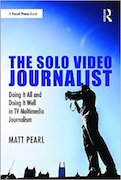Awards season typically crests and winds down as the summer arrives, with one of the highest of honors coming near the cycle’s end.
Last week the RTDNA announced this year’s national recipients of the Edward R. Murrow awards. Whenever the list comes out, I spend hours watching the winners. So often, even working in journalism, we miss the majority of the great work done nationwide. The Murrows gives us another chance to witness the pinnacle of our craft.
Here’s what I learned from pieces that spanned the spectrum of broadcast and digital media:
THE STORY: Recovering from Rehab (Reveal/Center for Investigative Action)
THE LESSON: Slow and steady CAN win the race.
Working in local TV has conditioned me to expect a certain type of investigative story: URGENT voicing from the reporter, DRAMATIC confrontations with a person in power, and WHIZ-BANG graphics to hold the attention of the casual news viewer who’s debating whether to keep watching or head to bed.
But it doesn’t have to be that way. This piece shows how.
Recovering from Rehab took the National Murrow for investigative reporting among Small Digital News Organizations, and it’s easy to see why: it’s just as effective, just as gripping, but nowhere near as sensational as its analogues in TV. Producer Olivia Merrion and reporters Amy Julia Harris and Shoshona Walter triumph here, with a straightforward but thoroughly reported story about a man sentenced to a year in prison but diverted to an alcoholism recovery program (despite no addiction to alcohol) where he mainly worked on a chicken processing plant. The super-tight shots at the start grab attention immediately, and from there Merrion and her team unfold the story with a deliberate confidence in its content.
THE STORY: The Isle of Eigg (60 Minutes/CBS News)
THE LESSON: Calm and confident can win the race too.
Similar to Recovering from Rehab, this story shows the beauty that can result when we tone down the hysterics and trust our material.
I love how Steve Kroft introduces this 60 Minutes piece from the studio: “Every now and then, just for the fun of it, we decide to go off to some obscure place you’ve never heard of and are unlikely to visit. Tonight … we’re taking you to Eigg.” Before a frame of video is shown, Kroft has established his story’s tone. An accomplished writer once told me, “You need to teach someone how to read your story.” Broadcast writers can apply that too.
From there Kroft takes a soft, storybook tone and doesn’t try to steal the scene from Eigg’s beautiful scenery. He leans into the ruckus caused on the isle by his team’s appearance, and he tells the story with clear affection for its characters. Kroft took the television network Murrow for excellence in writing, which is no surprise for such a versatile TV veteran.
THE STORY: Strings for Hope (WTVF-TV, Nashville)
THE LESSON: Treat audio with the same respect as video.
I’m not surprised that Nashville photographer (and previous Telling the Story podcast guest) Catherine Steward won a National Murrow. But the way she did it – and the story that won – provide so much guidance for young journalists who produce mini-versions of these kinds of pieces every day.
Steward produced a track-less package about a foundation called Strings for Hope that repurposes musical strings into wearable art, made by women who were formerly incarcerated with drug and alcohol addiction. It’s a beautiful concept, and Steward rises to it with an equally beautiful treatment. She captures crisp audio, whether on the Nashville streets or inside the string-spinning studio. Then she layers it in the edit with seamless fades in and out, musical and natural-sound-based scene switches, and pristine video to match.
This piece is a winner, no doubt. But it’s maybe the most instructive and practical for up-and-coming storytellers in need of inspiration.
THE STORY: All in the Game: The Black Athlete in America (Retro Report)
THE LESSON: Know your identity, and embrace it.
I should say up front: I adore Retro Report.
I admire their storytelling. I appreciate their story selection. But mostly, I love that they know exactly who they are and produce videos with a style and tone that reflect their identity.
Their Murrow-winner, a 14-minute examination of dissent and black athletes in America, is riveting from front to back. It uses the Retro Report’s rubric – apply history and context to present-day matters – and keeps it moving with compelling interviews and a sharp presentation.
THE STORY: Atticus (WXIA-TV, Atlanta)
THE LESSON: When you get your shot, seize it.
I work 100 feet from the digital docu-series unit at WXIA-TV called Atticus, and it’s easy to be envious. It’s a five-person team that receives the equipment, time, and corporate backing afforded to maybe 1% of local news journalists. With resources like theirs, they should win national awards.
But resources and opportunity mean little without execution. This team executes, thanks to two qualities it possesses in overflow: talent and commitment.
Check out the link above. They’re like the Gary Smith of local TV news: they only turn a few projects each year, but those projects are meticulously thought out, written, and edited, and they teem with versatility and willingness to experiment. Atticus took the large market TV station Murrow for excellence in innovation, and it’s one of many major awards they have captured in the past two years.
The Solo Video Journalist is available for purchase. You can find it on Amazon, Barnes & Noble, and the publisher’s web site.
Matt Pearl is the author of the Telling the Story blog and podcast. Feel free to comment below or e-mail Matt at matt@tellingthestoryblog.com. You can also follow Matt on Facebook and Twitter.

